












Engage your pupils with over 2,000 interactive resources! From engaging classroom resources to editable planning documents and printables, Maths and Me offers everything you need to make maths fun and engaging.
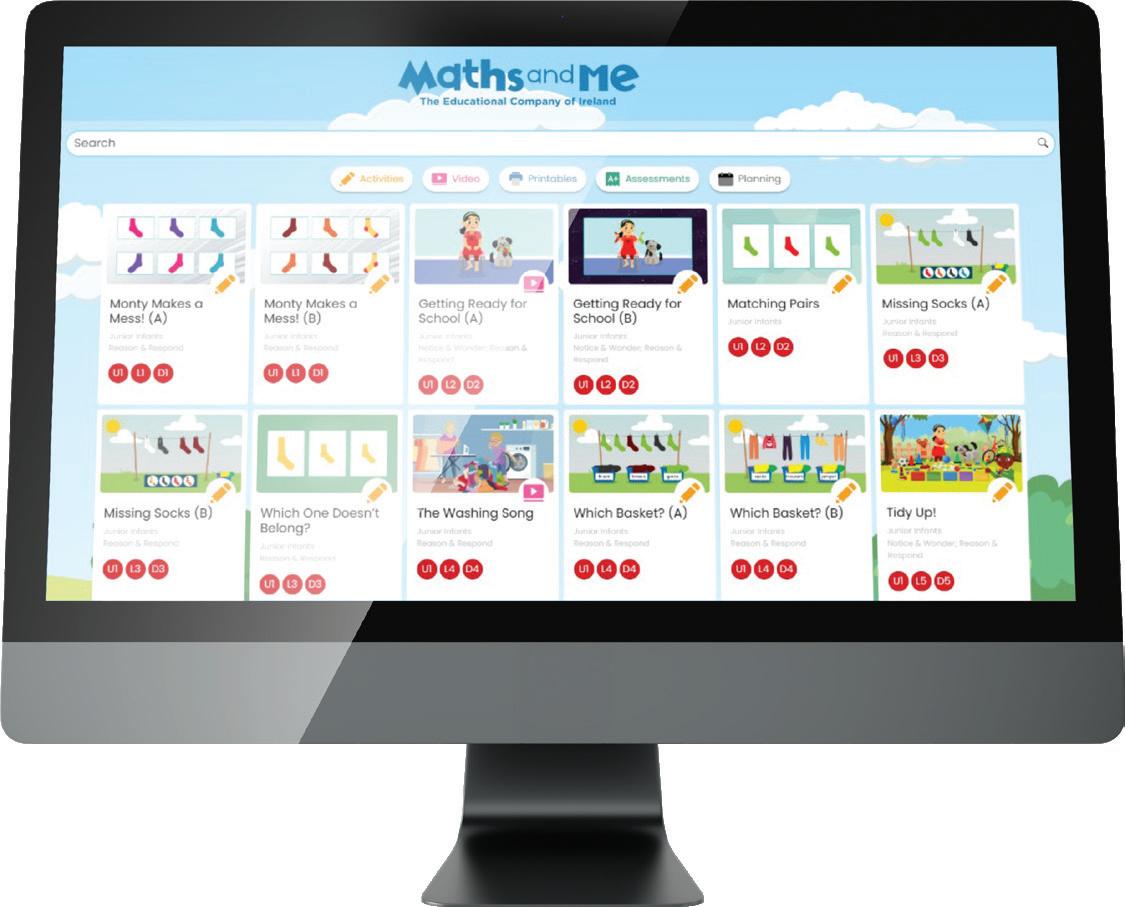



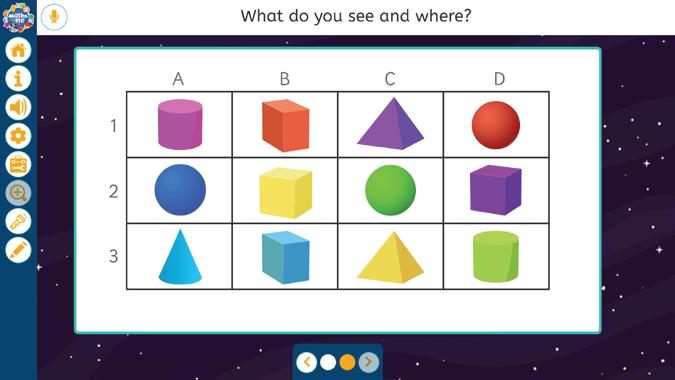
l Interactive and Easy-to-Use: Resources designed to integrate seamlessly into your lessons.
l Promotes Playful and Engaging Learning: Encourages participation and positive engagement.
l Fully Aligned to the PMC: Supports Key Pedagogical Practices, development of Elements and Formative Assessment.
l Access Made Simple: Access via the Platform for easy filtering of resources, or access via the Teacher’s Planning eBook to use the lesson plans and resources side by side.
l Comprehensive Support: Interactive ebooks, digital resources, e-manipulatives, printables and a Pupil/Parent App all available.
Explore this guide to learn more about our resource types, toolkit, printables and app.
Transform your maths lessons today!



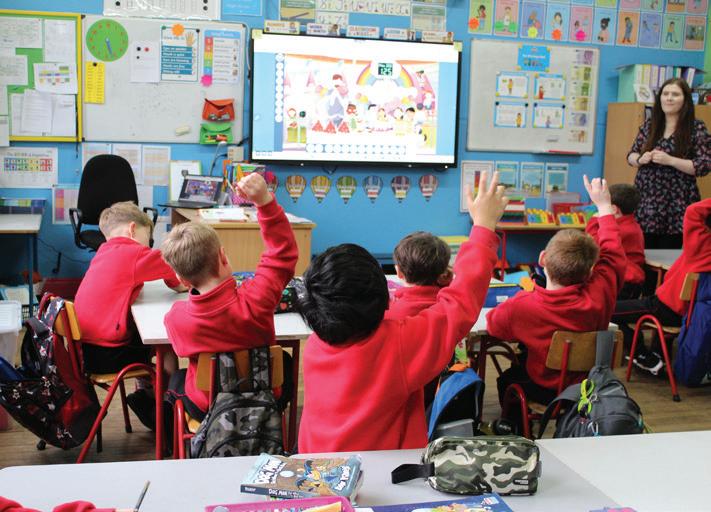

Maths and Me’s innovative digital resources are designed with effective and engaging whole-class learning in mind. They support the Maths and Me Routines – these are a collection of playful, engaging and inclusive interactions that promote mathematical talk, thinking and modeling among all children. These routines are proven to activate prior knowledge, foster productive dispositions and provide valuable formative assessment opportunities for teachers.
In Maths and Me, Reason and Respond is an umbrella term for the following exciting and purposeful resource types designed to get pupils thinking, sharing and justifying their answers. These resource types support:
3 Maths Talk 3 Productive Disposition 3 Cognitively Challenging Tasks 3 Mathematical Modeling 3 Playfulness
They also contribute to the development of the following elements: 3 Reasoning 3 Communicating 3 Understanding and Connecting 3 Applying and Problem Solving
Animations and Videos
Animations and videos make maths exciting and accessible, transforming abstract concepts into visual, engaging experiences. They help pupils grasp complex ideas more easily and foster a deeper understanding of mathematical concepts.

Junior Infants, Unit 2, Measuring 1


1st Class, Unit 9, Location and Transformation

2nd Class, Unit 5, Time 1


3rd Class, Unit 5, Multiplication and Division 1
“My class love seeing the characters in different real-life scenarios – once they see Monty they’re hooked.”
“The videos are an engaging way to cover content and reinforce learning.”
Posters provide a captivating visual stimulus, prompting children with two key questions:
l What do you notice?
l What do you wonder?
These questions, followed by ten more, stimulate thinking and discussion, encouraging children to share their understanding, experiences, and opinions. The focus is on justifying their responses.
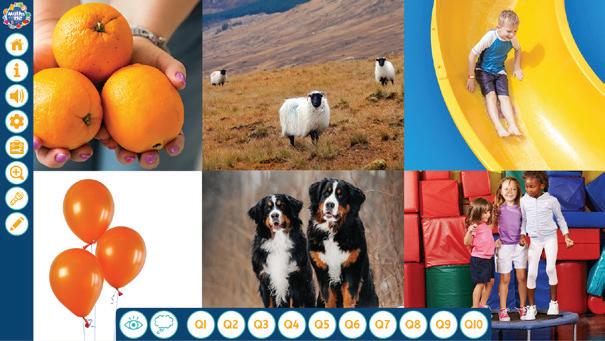
Junior Infants, Unit 3, Numbers 1 to 3.

Senior Infants, Unit 3, Operations within 10

2nd Class, Unit 6, Shape
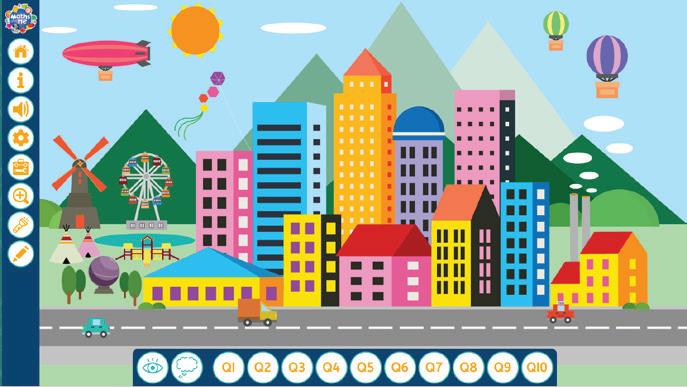
“My class love the posters. They’re a great way to start a unit, to get discussion going and to illicit children’s prior knowledge.”

Same But Different resources present two related images and pupils are asked to determine what is the same, and what is different. They are a simple yet powerful way to get pupils thinking critically about mathematical concepts. They are naturally low-floor, high-ceiling activities as pupils can contribute at their own level.

Junior Infants, Unit 8, Numbers 6 to 8

3rd Class, Unit 5, Multiplication and Division 1
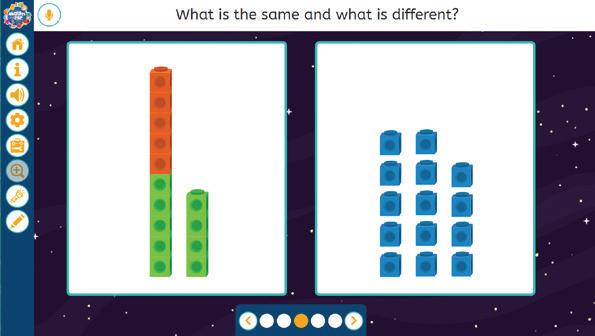
1st Class, Unit 7, Numbers to 100
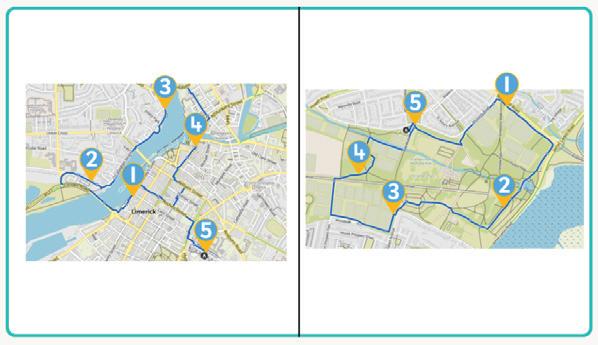
4th Class, Unit 9, Measuring 1
“They’re really inclusive – every child can say something about the images.”
Which One Doesn’t Belong?
Which One Doesn’t Belong? resources present four images and children are asked to consider which one doesn’t belong, and |explain their reasons why. The fact that there’s no one single correct answer means they encourage critical thinking, creativity and lively discussion as pupils justify their choices.




“ Which One Doesn’t Belong promotes a lot of creative thinking –the children get competitive trying to think of new and different justifications!”
Would You Rather?
Would You Rather? resources present pupils with visual choices that require them to make decisions and justify their answers. These engaging prompts stimulate critical thinking and spark discussions, making maths more meaningful.


2nd Class, Unit 13, Measuring 2
“ These resources are great because they bridge maths and real-life – sometimes children give very practical reasons for their preference, other times it’s a maths reason.”
Quick Images activities present a series of images that are briefly revealed and then hidden. Pupils quickly record their answers on mini-whiteboards, then share and discuss their responses. This rapid reveal-and-hide technique encourages subitising and sharpens estimation skills, making maths both fun and interactive. Quick Images support:


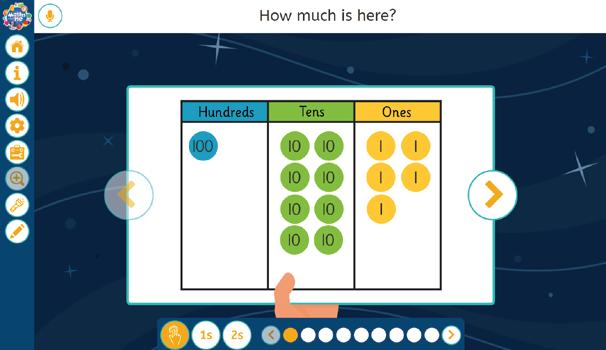

1st Class, Unit 7,
Numbers to 100
2nd Class, Unit 7, Numbers to 200
Number Strings are a series of related maths questions designed to build fluency in specific strategies. Pupils use their mini-whiteboards to respond and share their answers and the strategies they used. This interactive approach helps deepen understanding and promotes collaborative learning.
2nd Class, Unit 12, Addition and Subtraction 3

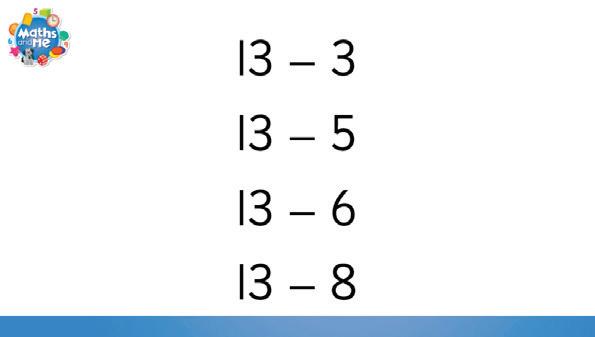
“ It’s great when they share their answers on their mini-whiteboards as there isn’t a spotlight on any one child – it brings all children along in the process.”
Choral Counting resources help children to practise counting aloud together, whether forwards, backwards, from various starting points, or using different intervals. This activity supports reasoning, predicting and justifying, making it a powerful tool for developing number sense and mathematical thinking. This resource type supports:
Choral Counting resources also contribute to the development of the following elements:

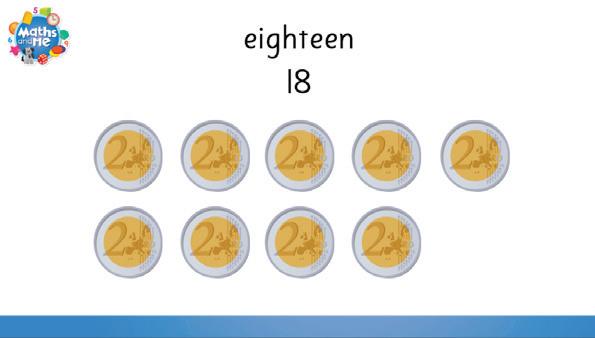

Class, Unit 15, Operations within 15 Money
3rd Class, Unit 5, Multiplication and Division 1
“It’s great to have the visuals ready to go for children to count along with.”

Concept Cartoons feature the Maths and Me programme characters expressing their views on a scenario or concept. Pupils are asked what they think, and to explain their reasoning. Pupils can be encouraged to investigate further and/or provide their own mathematical models to explain and justify their thinking. This approach sparks curiosity and deepens understanding through engaging discussions.
Concept Cartoons support:
Concept Cartoons also contribute to the development of the following elements:

Junior Infants, Unit 7,

1st Class, Unit 7, Consolidating Numbers to 100 Numbers 0 to 5 2nd Class, Unit 11, Patterns

“They really get a lot from these and love seeing the characters.” “It’s great that the programme characters model putting their ideas across, even if they’re not correct.”

Three Act Tasks engage the whole class with a cognitively challenging task. Broken into three ‘acts’, pupils are encouraged to think about the problem, make reasonable estimates, consider what information they still need and what they can do with the information to solve the problem. Three Act Tasks support:
Three Act Tasks also contribute to the development of the following elements:




There’s so much learning in just one of these resources.”
“They love the problem-solving aspect of them.”


Would This Work? resources are based on a question or task that has already been completed by the class. They show how each of the four programme characters approached the same task. Some characters may have misconceptions, while others offer unique but correct solutions. Pupils evaluate these approaches, deciding if they would work and explaining why.
Would This Work? resources support:
Would This Work? resources also contribute to the development of the following elements:



Unit
“The children absolutely love seeing how the programme characters solved the problem. They especially like
“These are great for seeing how different representations and models can be used in solving the same problem.”

Unlock the full potential of your maths lessons with our bespoke interactive toolkit. Featuring tools like Money, Clock, Branching Bond, Number Path, and more, this comprehensive set of manipulatives makes maths engaging, visual, and fun.


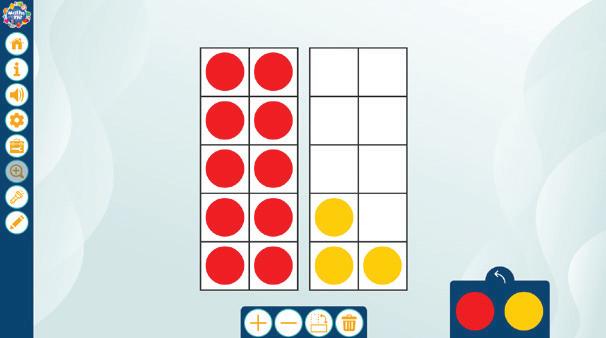



“ The toolkit is an invaluable component of the programme and removes the need to search outside of the programme for additional teaching tools.”

Enhance home/school connections and support independent learning with our Pupil/Parent App. Access a free bank of digital resources, including matching games, sequencing activities, multiple-choice questions, and more, to make learning fun and engaging both at home and in the classroom.
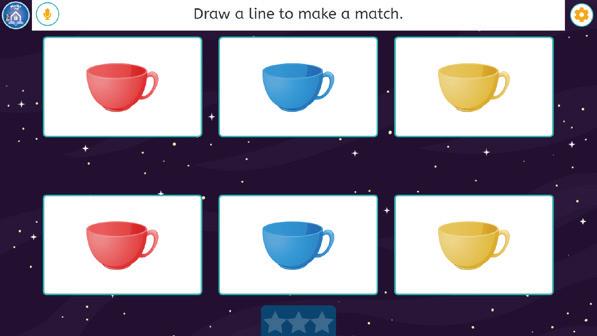
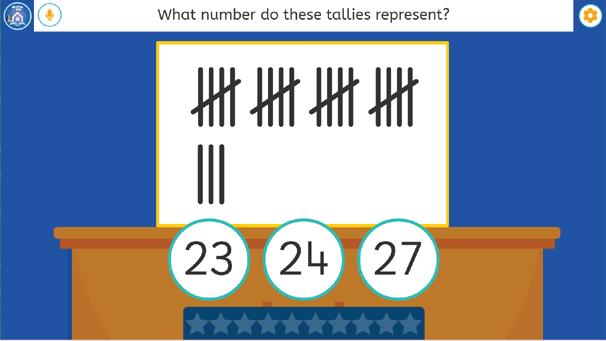


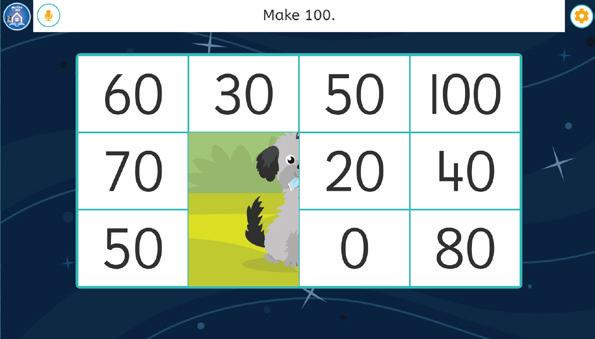

2nd Class, Unit 11, Patterns
“We love the app. We use it every week, by sending the code home. It’s used in class too during Chromebook time.”
“The app was one of the big reasons we took on the programme.”
Access a comprehensive suite of documents to support your maths planning, teaching, and assessment needs. From long-term and short-term plans to manipulative printables, maths language cards, and assessment record sheets, Maths and Me provides everything you need to succeed in the classroom.
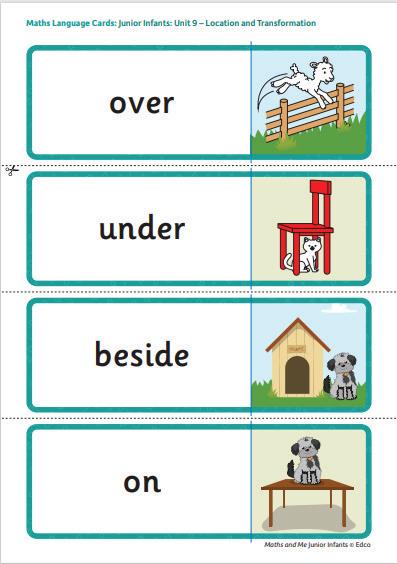
A selection of Maths Language Cards for Junior Infants, Unit 9, Location and Transformation
Base Ten Blocks Printable
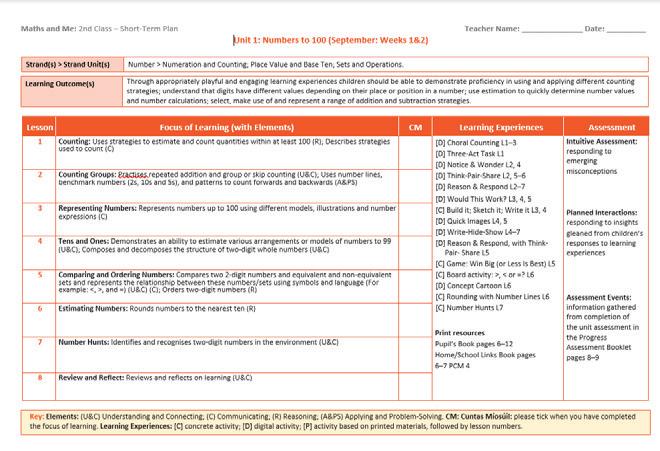

Editable Short-Term Plan
“ I am very impressed with the planning material as a whole, especially the great ideas for stations and groupwork –it makes organising these a lot easier.”
“ The Progress Assessment Booklet Record Sheet is a very handy tool. I can identify the areas the class didn’t perform well in and spend more time on those.”
“ The Maths Language Cards are great for supporting pupils with EAL in my classroom.”






